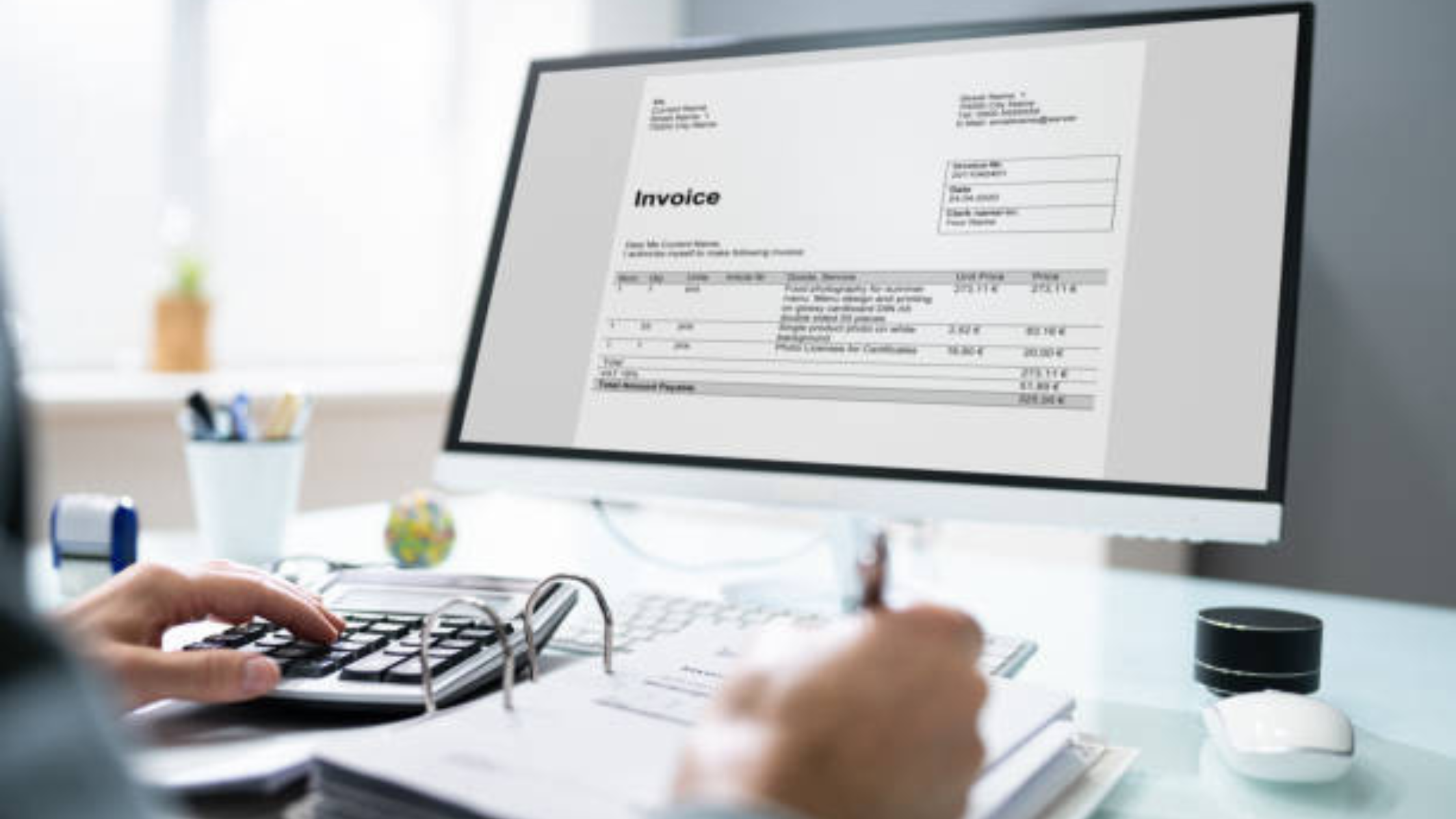5 Ways to Create Efficient Rent Receipts

Welcome to the world of efficient rent receipts! In this guide, we will explore five essential strategies for creating rent receipts that are not only professional and comprehensive but also streamlined and time-saving. Whether you're a property manager, landlord, or tenant, the importance of clear and organized rent receipts cannot be overstated. By implementing the techniques and tips discussed here, you can streamline your rental processes, reduce errors, and ensure that both landlords and tenants have a clear record of rent payments. From digital solutions to customizable templates, we will cover a range of methods that will help you optimize your rent receipt workflow. Get ready to transform the way you handle rent receipts and make the entire process more efficient and effective!
The Importance of Traditional Rent Receipts
Traditional rent receipts are an essential aspect of the landlord-tenant relationship, serving as an official acknowledgment of rent payments. These receipts hold significant value for both landlords and tenants, as they provide a formal record that can be crucial for legal and financial purposes. Let's explore the various facets of traditional rent receipts to gain a comprehensive understanding of their importance.
Definition and Purpose of Traditional Rent Receipts
Traditional rent receipts serve as documented proof that a tenant has made a rental payment to the landlord. Their primary purpose is to create a written record that includes crucial details such as the date of payment, the amount paid, and the method of payment. This documentation is vital for both parties to track the history of rent payments accurately and to address any potential disputes or discrepancies that may arise during the lease period.
Format and Content of Traditional Rent Receipts
The format of a traditional rent receipt generally encompasses essential information such as the landlord's name, contact details, the tenant's name, the address of the rental property, the date of payment, the payment amount, and a signature or stamp from the landlord. Some receipts may also allocate a space to specify the purpose of the payment, such as rent for a particular month or any additional charges. Additionally, it is increasingly common for landlords to issue digital receipts, which may include QR codes or unique identifiers for efficient record-keeping.
Advantages and Limitations of Traditional Rent Receipts
One of the notable advantages of traditional rent receipts is their tangible nature, providing physical evidence of payment. This can be particularly advantageous in the event of legal disputes or for tax-related documentation. However, it is essential to acknowledge the limitations associated with traditional receipts, such as the risk of loss or damage, which may present challenges in maintaining a complete and accurate payment record. Furthermore, handwritten receipts may be susceptible to errors or illegibility, underscoring the importance of maintaining clear and precise documentation.
Traditional rent receipts serve as invaluable tools for both landlords and tenants, offering a formal and tangible record of rent payments. By comprehending their format, content, and significance, both parties can ensure transparent and well-documented rental transactions, fostering a harmonious and accountable landlord-tenant relationship.
Section: Digital Rent Receipts
In today's digital age, the use of digital rent receipts has become increasingly popular among landlords and tenants alike. This section will delve into the definition and benefits of digital rent receipts, the process of creating and distributing them, as well as the aspects of security and convenience associated with this digital solution.
Definition and Benefits
- Exploring the Concept of Digital Rent Receipts
- Advantages for Landlords and Tenants
Digital rent receipts are electronic records that serve as proof of payment for rent. They offer numerous benefits, such as reducing paper clutter, enabling easier record-keeping, and providing a more eco-friendly alternative to traditional receipts. For landlords, digital rent receipts can streamline accounting processes and facilitate easier tracking of rent payments. Tenants benefit from the convenience of accessing and storing receipts digitally, reducing the risk of losing or misplacing paper copies. Additionally, digital rent receipts also provide a more secure and tamper-proof way of documenting rent payments, offering protection for both landlords and tenants in case of disputes or misunderstandings.
How to Create and Distribute
- Step-by-Step Guide to Creating Digital Rent Receipts
- Methods for Distributing Digital Rent Receipts to Tenants
Creating digital rent receipts involves utilizing specialized software or templates designed for this purpose. Landlords can use online platforms or dedicated software to generate professional-looking receipts that include essential details such as the amount paid, payment date, and property address. The receipts can then be distributed to tenants via email or through a secure online portal, ensuring that both parties have easy access to the documentation. It's important to note that creating and distributing digital rent receipts should comply with any legal or regulatory requirements specific to the rental jurisdiction. This may include adhering to electronic signature laws and ensuring the authenticity and integrity of the digital receipts.
Security and Convenience
- Ensuring Security Measures for Digital Rent Receipts
- Highlighting the Convenience and Ease of Digital Processes in the Rental Industry
Security is a crucial aspect of digital rent receipts. Landlords should employ secure platforms to create and store receipts, safeguarding sensitive financial information. Additionally, tenants should be assured of the integrity and authenticity of the digital receipts, knowing that they are a reliable and legally-accepted form of documentation. The convenience of digital processes in the rental industry extends beyond receipt management. It encompasses online rental payments, lease agreements, and communication, streamlining various aspects of property management and enhancing the overall rental experience. By embracing digital solutions, landlords and tenants can benefit from greater efficiency, transparency, and security in their rental transactions.
Past Error in Output: An error to avoid in the future
Customizing Rent Receipts
Tailoring Receipts to Meet Specific Needs.
Customizing rent receipts involves tailoring them to meet specific needs. Landlords can customize receipts by adding or removing fields based on the information required. This may include including additional tenant details, property-specific information, or preferred payment methods. By tailoring receipts, landlords ensure that they accurately reflect the rental transaction and provide comprehensive information to both parties involved.
Adding Branding and Personalization.
Another critical aspect of customizing rent receipts is incorporating branding and personalization. This can include incorporating a logo, using specific colors or fonts that align with the property or management company's branding, and personalizing the receipt with the tenant's name or unit number. By doing so, landlords can create a cohesive and professional appearance across all their documentation, reinforcing their brand identity and presenting a polished image to tenants and stakeholders.
Creating a Professional Impression.
Customizing rent receipts plays a pivotal role in creating a professional impression. A well-designed and personalized receipt reflects positively on the landlord or property management company. It conveys attention to detail, organization, and a commitment to providing a high standard of service. Tenants are likely to appreciate the professionalism and attention to detail, fostering trust and confidence in the landlord or property management's capabilities.
Enhancing Record-Keeping and Compliance.
Apart from the aesthetic and branding benefits, customizing rent receipts can enhance record-keeping and compliance. Landlords can incorporate specific clauses or legal disclaimers to ensure compliance with local regulations and streamline record-keeping processes. Additionally, by customizing receipts to include essential details, landlords can efficiently track payments, property-specific expenses, and other pertinent information, simplifying financial management and reporting.
Improving Communication and Transparency.
Customizing rent receipts can also serve as a means to improve communication and transparency. Landlords can use customized receipts to convey essential messages, such as policy updates, maintenance schedules, or contact information. By leveraging receipts as a communication tool, landlords foster transparency and keep tenants informed, contributing to a positive landlord-tenant relationship.
Embracing Digital Solutions.
In the modern era, customizing rent receipts extends to embracing digital solutions. Landlords can explore digital receipt platforms or software that offer customizable templates, automated delivery, and secure storage. Digital receipts not only reduce paper waste but also provide a convenient and eco-friendly method for tenants to access and retain their rent records.
Customizing rent receipts extends beyond mere aesthetic enhancements. It serves as a strategic tool for landlords to tailor their communication, enhance professionalism, and streamline record-keeping, ultimately contributing to a positive rental experience for both landlords and tenants.
Legal Compliance
Understanding the Importance of Legal Compliance in Business.
Navigating Local Regulations: Ensuring Adherence to Regional Laws.
Ensuring Tax Compliance: Upholding Financial Integrity.
In the ever-changing landscape of business, legal compliance is a critical aspect of maintaining ethical and operational integrity. A comprehensive understanding of legal compliance is essential for safeguarding the interests of a burgeoning enterprise and ensuring its sustainable growth.
Key Information to Include: Building a Foundation of Compliance
Understanding local regulations is a fundamental cornerstone of legal compliance. It encompasses a spectrum of considerations, including obtaining the necessary licenses and permits, adhering to zoning laws, and comprehending industry-specific regulations. By diligently adhering to these regulations, businesses fortify their legal standing and lay a robust foundation for their operations.
Navigating Local Regulations: Ensuring Adherence to Regional Laws
Comprehending and adhering to local regulations is paramount for businesses to operate within the bounds of the law. This includes understanding the legal intricacies and requirements specific to the region of operation. By staying updated on regional legal frameworks, businesses can ensure compliance and minimize the risk of legal complications.
Ensuring Tax Compliance: Upholding Financial Integrity
Compliance with tax requirements is instrumental in upholding financial integrity and fostering a positive relationship with governing authorities. This involves understanding and fulfilling tax obligations such as income tax, sales tax, and employment tax. By meticulously adhering to tax regulations, businesses demonstrate their commitment to ethical financial practices and contribute to the broader fiscal framework.
Navigating Legal Compliance: A Strategic Imperative
When starting a business, it's crucial to ensure legal compliance to avoid potential legal entanglements. By prioritizing legal compliance, businesses not only mitigate the risk of legal complications but also cultivate an environment of trust and reliability. Embracing legal compliance as a strategic imperative empowers businesses to navigate regulatory landscapes with confidence and integrity.
Legal compliance serves as a guiding beacon for businesses, fostering trust, integrity, and sustainable growth. By embracing the nuances of local regulations and tax requirements, businesses can forge a path of ethical fortitude and operational resilience, thereby contributing to a robust business ecosystem. Upholding legal compliance is not only a legal requirement but also a strategic advantage that fosters credibility, reliability, and long-term success.
Implementing efficient rent receipts can streamline the rental process for both landlords and tenants. By utilizing digital tools, customizing receipt templates, providing detailed information, maintaining a systematic record-keeping system, and ensuring compliance with legal requirements, landlords can create a more organized and professional rental experience. These practices not only facilitate smooth rent collection but also foster transparency and accountability in the landlord-tenant relationship, ultimately contributing to a harmonious and efficient rental process.







